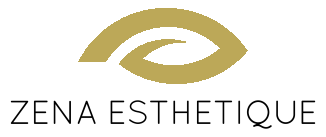Over the years, photorejuvenation has established itself as an effective method to reduce the visible effects of aging on the skin.
This advanced technology helps even out the complexion and brighten the epidermis by targeting imperfections such as rosacea, pigmentation spots, and acne scars.
PREPARATION AND TREATMENT
Intense Pulsed Light (IPL) treatment works deep within the skin while preserving the integrity of the epidermis. As the light penetrates the superficial layer of the skin, it generates controlled heat in the dermis, targeting three key elements of skin rejuvenation:
- Micro-capillaries: to visibly reduce redness and rosacea
- Pigments: to diminish dark spots and even out skin tone
- Fibroblasts and collagen: to stimulate the production of collagen, elastin, and hyaluronic acid, improving skin firmness and elasticity
WHAT TO EXPECT
Thanks to IPL technology, the skin quickly regains a fresher, more radiant, and more even appearance—with minimal discomfort.
In addition to its rejuvenating benefits, IPL is also highly effective in treating acne. By targeting the blood vessels that supply the sebaceous glands, it reduces sebum production, helping to decrease oiliness and prevent breakouts.
IN CONCLUSION
Photorejuvenation is a non-invasive aesthetic treatment that uses intense pulsed light (IPL) to improve skin texture and appearance.
It is a lasting investment in the health and beauty of your skin.
Frequently Asked Questions
What skin concerns can photorejuvenation treat?
Photorejuvenation is an effective solution for improving various skin imperfections, including:
- Brown spots (sun spots or age spots)
- Redness and rosacea
- Uneven or dull complexion
- Fine lines
- Enlarged pores
- Mild acne scars
Which areas of the body can be treated?
The treatment is primarily used on:
- The face
- The neck
- The décolleté
- The hands
Is the treatment painful?
Most patients report a mild tingling or warming sensation during the session. The procedure is generally well tolerated and does not require anesthesia.
How many sessions are needed?
On average, 3 to 5 sessions are recommended, spaced 3 to 4 weeks apart. The number of sessions may vary depending on your skin type, individual needs, and desired results.
Are there any side effects?
Side effects are typically mild and temporary:
- Temporary redness (a few hours to one day)
- Warm sensation
- Slight swelling (rare) or temporary scabbing
Is there any downtime?
No, you can resume your daily activities immediately after treatment. However, for about a week, you should avoid anything that could increase skin heat:
- Hot showers
- Sauna
- Intense physical activity that causes sweating
- Direct sun exposure
- Exfoliating the treated area
- Cooking in front of a hot oven or staying in overheated rooms
What results can I expect?
Results appear progressively after each session. You can expect smoother, brighter skin, a more even skin tone, and a visible reduction in spots and imperfections.
Who is this treatment for?
Photorejuvenation is recommended for individuals with:
- Fair to light-medium skin tones
- Signs of aging or sun damage
- Dull or uneven complexion
Who should avoid this treatment?
Photorejuvenation is not recommended for:
- Pregnant women
- Very dark or recently tanned skin
- People with certain medical conditions (consult your skincare professional)
What aftercare is needed?
To help your skin heal and maximize results:
- Avoid sun exposure for at least 2 weeks
- Apply a daily moisturizer and SPF 50 sunscreen
- Do not pick or scratch the treated areas, even if slight scabbing occurs

